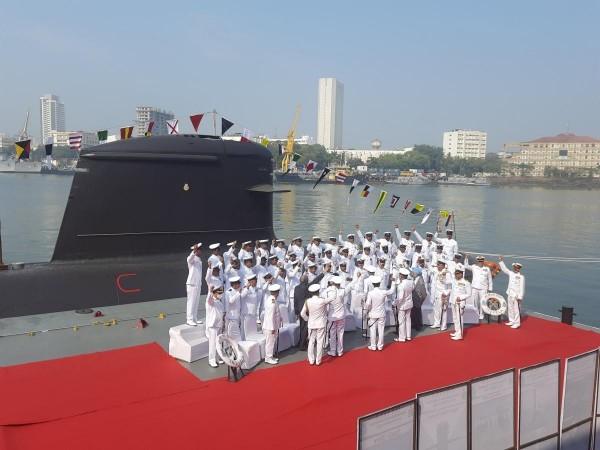The Indian Navy today inducted the 4th Stealth Scorpene-Class Submarine in presence of its Chief Admiral Karambir Singh. The induction has come as a major boost for the Indian Navy that is witnessing a depleting strength.
Admiral Karambir Singh, Chief of the Naval Staff said, "INS Vela has the ability to undertake an entire spectrum of submarine operations. Given today's dynamic and complex security situation, its capability and firepower will play a crucial role in enhancing the Navy's ability to protect India's maritime interests."

Project-75
The Navy has commissioned three warships, INS Kalvari, INS Khanderi, and INS Karanj, as part of the over Rs 23,000 crore 'Project-75' underway at Mazgaon dock with French participation for the construction of six Scorpene submarines. Vagir and Vagsheer, the fifth and sixth, will be delivered in the coming years. The Scorpene project has been beset by delays and cost overruns, but it is crucial for the Navy, which is operating an ageing fleet of only eight Russian Kilo-class and four German HDW submarines.
#INSVela commissioned into the #IndianNavy today #25Nov21.#Watch as the naval ensign is hoisted for the first time onboard.#HappyHunting@indiannavy @DDNewslive @airnewsalerts @PBNS_India pic.twitter.com/F7WHrAXNfx
— PRO Defence Mumbai (@DefPROMumbai) November 25, 2021
A total of 18 conventional submarines, six nuclear-powered attack submarines (SSNs), and four nuclear-powered submarines with nuclear-tipped (SSBNs) missiles are required by the Navy. However, the long-awaited Rs 42,000 crore project to build six new-generation diesel-electric submarines with international participation has yet to get underway.
The six new submarines under 'Project-75 India' will be equipped with land-attack cruise missiles as well as air-independent propulsion (AIP) for increased underwater endurance. The first such submarine, however, will not be available for almost a decade. In terms of nuclear weapons, India currently has only one SSBN, the INS Arihant, which is equipped with short-range K-15 (750 km) missiles.

Three additional SSBNs are being built in India, with the INS Arighat set to be commissioned next year after a delay. The K-4 missiles, which have a 3,500-kilometer striking range, will take at least another year to be available for induction. Countries such as the United States, Russia, and China have submarine-launched ballistic missiles with a range of over 5,000 kilometers (SLBMs).

















